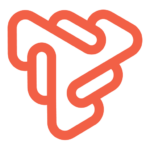Finding the right people for a job is super important for companies. And that’s where data-driven recruitment comes in. Instead of just relying on resumes and interviews, companies now use a method called data-driven recruitment. It’s like having a bunch of valuable information about how good someone might be at a job. This new method of hiring helps companies make smart choices. From the very start of searching for someone to join the team all the way to choosing the perfect person for the job. It’s kind of like giving them a tool to find the best fit for their team!
The most important aspect of the hiring process is data.
Here, it’s important to know why we should be open to data.
- Hire the best: Data helps us identify and attract high-potential candidates who perfectly fit the company’s culture and team. For example, a company wants to hire a new. They can use earlier data to look at past candidates and search for someone who would fit the role. Searching for a new one can cost money and time.
- Boost efficiency: It helps streamline workflows, and automate repetitive tasks. It also identifies the most effective sourcing channels, saving time and resources. Let’s say a company receives hundreds of job applications for a single position. Instead of manually going through each resume, they can use recruitment software or ATS that uses data to automatically filter out candidates who don’t meet the basic requirements.
- Minimize bias: Data-driven criteria reduce unconscious bias and promote diverse, equitable hiring practices. We can analyze past data to identify any patterns of bias, such as certain demographics being consistently overlooked for promotions. By recognizing these biases, we can take steps to address them.
- Make informed decisions: Track key metrics, measure ROI, and continuously improve the recruitment process based on real-world results. By analyzing these metrics, the recruitment process can identify areas for improvement. Also, strategic decisions can be made to optimize the hiring process.
Now that we have gone through why should the data be used? A question may arise in everyone’s mind. But why is data-driven recruitment so crucial?
Data-driven hiring makes it safer because it gives real facts and helps make the right decisions. Traditional hiring leads to bad hiring. According to a study, a single bad hire can cost a company up to 30% of the employee’s annual salary. That’s a significant financial hit, especially in today’s competitive talent era. Traditional hiring methods, relying on gut feeling and bias, led to costly mistakes. So, choosing the right option would be better than the loss of time and money.
Recruitment software is the solution to this problem of bad hire. It is also helpful in data-driven hiring. Let’s explore some key features of it.
The major feature can be the Applicant Tracking System (ATS). It is a software that helps to maintain the recruitment process. It concentrates on candidate data, automates resume screening, and streamlines communication with candidates. By providing a centralized platform for managing recruitment tasks, the ATS saves time and helps hiring managers find the best talent for their organization.
Another one is Analytics & Dashboards. It shows important numbers about hiring, like how long it takes to fill a job, how much it costs, and where candidates are coming from.
One more can be Predictive Analytics. It uses smart technology to find good candidates based on their skills and experience, and it can even guess if there might be any problems.
AI-powered Tools, like chatbots, help with talking to candidates at the start, and they can also check how interested someone is. Plus, there are tests to see if candidates have the skills needed for the job.
All these advantages or features of data are possible only when used effectively. Remember, data is power, but only when used responsibly.
- Data quality: Ensure accurate and reliable data collection to avoid uneven results.
- Transparency: Communicate how data is used and safeguard candidate privacy.
- Ethics: Implement fair and unbiased practices throughout the recruitment journey.
- Continuous learning: Adapt and refine data-driven hiring based on ongoing results and evolving market trends.
Using data-driven recruitment to hire people is a big deal for companies. It helps them find the best workers and avoid costly mistakes. But we have to be careful and use data responsibly. That means making sure the information we use is accurate, being clear about how we use it, and treating everyone fairly. By doing this, we can make sure that data helps us make better decisions and find the right people for the job.
So, let’s keep learning and using data wisely to make the hiring process even better!
